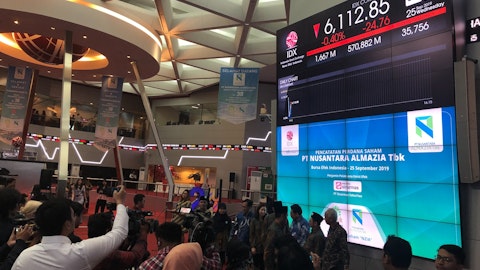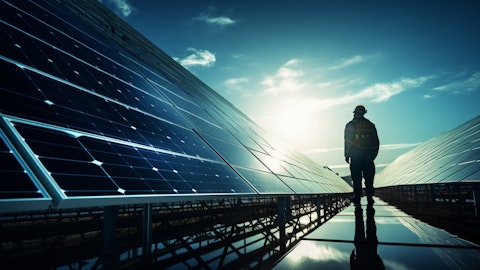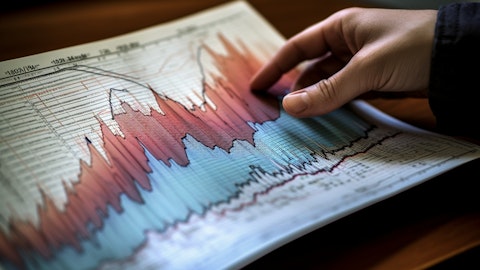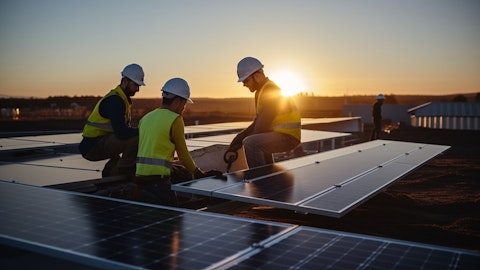Alan Lau: Thanks a lot. So following the question from Phil, because some of the investors are also asking as to there’s $200 million remaining from the $700 million buyback program last year. So this amount of cash is sitting offshore already, and it’s not contingent to any of the distribution from the A-share level? So is there any preliminary plans, like if dividends is open for consideration, because some of the peers, some of the ADRs have also announced dividend payouts, which has resulted in good reaction from the market?
Anita Zhu: [Foreign Language]
Xiang Xu: [Foreign Language] [Interpreted] So regarding the $200 million remaining of our $700 million share repurchase program announced, like Mr. Xu has mentioned previously, that will be discussed after the A-share dividend plan [Indiscernible], and we will definitely consider whether to give off dividends or to rollout another share repurchase. We believe that we will definitely consider these plans to increase confidence in our company and in our management team. This is Xu, as also a Board Member in [Zhonghuan] (ph) Daqo and the payout ratio for 2023 is still not decided yet as they have not convinced to have the board meeting for the Asia. Given that we cannot say for sure what program we are going to rollout or what the amount will be, but we hope that our investors could understand and once the Zhonghuan Daqo announces their dividend plan for the year, we will announce at the same time and our board will discuss around this topic.
Alan Lau: Thanks a lot. That’s very clear. So switching gear to some of the technical questions. Seems recently there’s some trial in the downstream players in regards to cauliflower type anti-poly. So I wonder if that may help to release the shortage in anti-poly, or and also our new players able to achieve that type of purity even for the cauliflower type policy? Thanks.
Anita Zhu: [Foreign Language]
Xiang Xu: [Foreign Language] [Interpreted] So we have been talking with our downstream players like PCL, [Indiscernible], very privately. Based on our understanding, it’s still very difficult to produce and type with other, let’s say cauliflower type poly. There’s still a very high barrier to tackle and we are keeping an eye on the new technology, but based on our understanding there’s still a huge step toward making untied with cauliflower poly.
Alan Lau: Thank you, that’s very clear. And my last question is in regards to the power tariffs. Because I think quite a lot of investors have inquired the power tariff hike in [Indiscernible]. And actually that’s a general situation in China. The power prices have been increasing, so we’d like to know in relation to our deal in Xinjiang and also our power prices in Inner Mongolia. What is our view on that and will there be risk of further power hike — power tariff hike and will that lead to increase in production cost? Thanks.
Anita Zhu: [Foreign Language]
Xiang Xu: [Foreign Language] [Interpreted] We are aware of the electricity cost increases in [Indiscernible]. However, because [Indiscernible] uses state grid and the local government has limited power on the electricity cost. And based on our information, the increase in electricity cost will increase production cost for players located in that region up by RMB7,000. However, for — per ton. Yes, RMB7,000 per ton. So, However, for us, Xinjiang uses local grid and we signed an exclusivity agreement with the government. We are not very worried about electricity cost. Similarly, for Inner Mongolia, they rely on local grid as well. Actually, the primary reason why we chose these two locations at the first place was because they use local grid, so we can enjoy the preferential electricity agreement and the lower electricity cost.
Alan Lau: Thanks a lot, Mr. Xu, Anita, and Ming. Very clear answer. I’ll pass on thanks.
Xiang Xu: Thank you, Alan.
Operator: Thank you. The next question comes from [Andrew Carpet] (ph) with Private Investor. Please go ahead.
Unidentified Analyst: Hello. So my question is when is exactly the Xinjiang A-type dividend declared? Like what month this year? Is it May? Is it April? July? This is my first question.
Anita Zhu: [Foreign Language]
Xiang Xu: [Foreign Language] [Interpreted] So, based on the Asia regulation and disclosure requirements, we expect to announce sometime near the end of March. And after, as we have said previously, after the Asia Xinjiang Daqo announces their dividend plan for the year. We will discuss among our board again whether to roll out another share purchase program or to distribute dividends.
Unidentified Analyst: Okay. So, like in March, April, we should hear also from the Daqo New York Stock Exchange listed company a response on the dividend or the extended buyback or special dividend from the cash balance or something like that? So April, let’s say April starts to mid-April?
Ming Yang: Yes, yes, that will be the likely timeline, yes, after Asia down their dividend level.
Unidentified Analyst: Okay, thank you very much. Also I want to congratulate you for the increase in production. I think it was 50%, 60%, I don’t remember, and also the guidance, very great, while also decreasing the cost. So very great result. My last question is for 2025, CapEx investments, are there any? How much would CapEx be in 2025? So in 2024, we have RMB8 billion to RMB9 billion, so $1.1 billion or $1.2, whatever? So what would be 2025? Do you expect to increase CapEx to have huge products like this year or lower CapEx $500 million downwards?
Ming Yang: Okay, so this is Ming. So I will address the CapEx issues. So I think 2025 CapEx is, will be mostly the remaining payments on the Inner Mongolia Phase 2 and some of the remaining payments on our Silicon Metal project. The current estimate is roughly RMB3 to RMB4. So I think that’s maybe $400 million to $600 million.
Unidentified Analyst: Yes, yes. So my — and considering this, so at the end of 2024, because you’re trading at the quick ratio of 5 or 4.5, I don’t know if it decreased a bit because you use some of your cash. It’s a huge quick ratio. You never had a quick ratio this high. So my question is, after this $1.1 billion in CapEx in 2024, would cash decrease? Let’s say we’re staying at current prices or at the current forecast, Polysilicon will not increase either on 50% or something. So at the current prices, how much would cash and cash equivalents decrease this year to $2.5 billion? So now they’re $3 billion, right? To $2.5 billion or to $2.1 billion? After the $1.1 billion CapEx this year.





